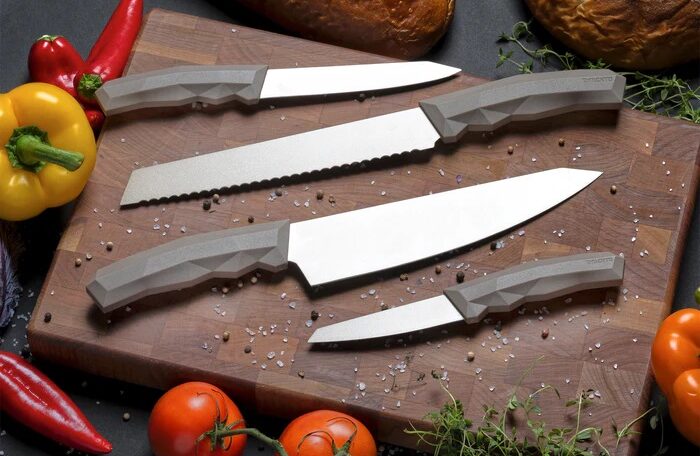Ever wondered the difference between dicing and chopping? Do you know your way around baton, batonnet, and julienne cuts? It takes practice with the knife to become an expert chef. Using a cooking knife set to learn these basic skills, you can improve your cooking so much that you can figure out the size of a brunoise cut without thinking about it and make delicious meals for yourself and others to enjoy.

Dicing Vs. Chopping
People often get confused about the difference between cutting and chopping. When you chop something, you get pieces about the same size but different shapes. Dicing is all about making precise cuts such that the pieces are uniform in size, usually in block form.
Brunoise Slice
Similar to mincing but requiring far more precision, the brunoise cut is a very small dice. This cut is great for flavoring broths, stews, and soups, and it’s also a common garnish. You need a high-quality cooking knife set to cut with accuracy and control.
Julienne Cut
This style of cutting is also known as a matchstick cut or allumette. This knife cut is perfect for creating long, skinny pieces of veggies. All you have to do is slice the veggies into planks, stack them, and then cut multiple planks into thin strips. You can make quick and easy dishes, such as stir-fries, salads, and slaw.
Batonnet Cut
With their identical techniques, this cut is easier to learn after you’ve mastered the julienne cut. All you need to make are little sticks of the same size and shape. This cut is well suited in dishes such as stir-fries, French fries, or vegetable platters, where presentation is essential.
Chiffonade Cutting
The chiffonade technique is the way to go when cutting herbs into long ribbons. Roll up a stack of fresh mint or basil leaves tightly and slice them. Similarly, this method is effective with kale, collard greens, spinach, and other leafy greens. Using a cooking knife set and delicately ribboning greens and aromatic herbs is a great way to bring out their flavor for savory dishes.
Mince Cut
The minced bits won’t be too concerned about being perfectly uniform if the slices are thin enough. After making rough initial cuts, gather everything into a mound using chopping and slicing motions. As you rock the knife across the pile, keep the tip steady with your free hand. You can use it to disperse flavor in a dish with aromatics, herbs, garlic, or any other ingredient.
Slicing
Slicing means cutting tiny, uniform pieces across the food item. Almost any fruit, vegetable, cheese, and bread can be sliced.
Final Thoughts
To be a skilled chef, you need to be able to cut just about everything. Learning about different cuts is a great way to improve cooking. Invest in a cooking knife set to get precise cuts.
In any kitchen, you must have a knife. It can make cooking safer, faster, and easier. Get professional-grade knives online from Dfackto and cook like a pro. Visit our website to place your order now.
